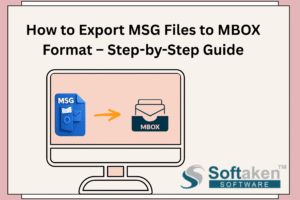In today’s fast-paced digital landscape, website performance, and user experience play a critical role in determining the success of online platforms. Slow-loading websites can lead to frustrated users, high bounce rates, and a negative impact on search engine rankings. That’s why learn PHP classes in Nagpur because one effective way to enhance website speed and responsiveness is by implementing efficient caching strategies in PHP. In this article, we’ll delve into the world of caching and explore various strategies to optimize your PHP-powered website for peak performance.
What is Caching?
Caching involves storing frequently accessed data in a temporary storage location, allowing faster retrieval when the same data is requested again. In the context of web development, caching can significantly reduce the load on the server and minimize the time needed to generate and deliver content to users.
How Caching Works
Caching Workflow
The caching process involves three key components: the cache itself, the data source, and the application logic. When a user requests data, the application first checks the cache. If the data is found, it’s retrieved and displayed to the user. If not, the data is fetched from the source, stored in the cache for future use, and then presented to the user.
Popular Caching Libraries and Tools
Memcached: Speeding Up Data Access
Memcached is an in-memory caching system that stores data in a key-value format. It excels at caching database queries and frequently accessed data, reducing the need to repeatedly query the database.
Redis: Advanced Caching Techniques
Redis is a versatile caching tool that supports various data structures, including strings, hashes, lists, and sets. Its advanced features, such as data persistence and pub/sub capabilities, make it a powerful choice for caching dynamic content.
APCu: User-Friendly PHP Caching
APCu is a user cache for PHP that stores opcode and user data in shared memory. It’s lightweight and easy to integrate, making it an excellent option for boosting PHP performance.
Caching Strategies for PHP Applications
Page Caching: Accelerating Page Load Times
Page caching involves storing entire HTML pages and serving them to users without the need for server-side processing. This strategy significantly reduces page load times, benefiting both user experience and server load.
Object Caching: Optimizing Database Queries
Object caching focuses on caching specific pieces of data or objects, such as database query results. By storing these objects in memory, subsequent requests for the same data can be fulfilled quickly, reducing database load.
Opcode Caching: Enhancing PHP Execution
Opcode caching involves storing compiled PHP code in memory, allowing for faster script execution. This strategy is particularly effective for applications with a large codebase or complex logic.
Implementing Caching in PHP
Integrating Memcached into Your Application
To integrate Memcached into your PHP application, you’ll need to install the Memcached extension, establish a connection to the Memcached server, and implement caching and retrieval logic in your code.
Leveraging Redis for Efficient Data Storage
Integrating Redis requires installing the Redis extension and utilizing its API to store and retrieve cached data. Its flexibility and support for advanced data structures make it a valuable asset for optimizing PHP applications.
Best Practices for Effective Caching
Setting the Right Expiry Times
Determining appropriate cache expiry times is crucial. Short expiry times may lead to frequent cache refreshes, while excessively long times might result in users receiving outdated content.
Cache Invalidation Strategies
Implementing proper cache invalidation mechanisms ensures that users receive accurate data when changes occur. Techniques like cache tagging and versioning help manage cache invalidation effectively.
Monitoring and Performance Tuning
Regularly monitoring your caching infrastructure and analyzing performance metrics allows you to identify bottlenecks and optimize cache usage for optimal results.
Caching for Dynamic Content
Caching User-Specific Data
Caching dynamic user-specific data requires strategies like per-user caching or segment-based caching. These approaches ensure that each user receives personalized content without sacrificing performance.
Adapting to Real-Time Changes
Dynamic content that frequently changes presents caching challenges. Implementing strategies like time-based invalidation or combining caching with real-time updates ensures that users receive the latest information.
Caching and E-commerce Websites
Caching Product Listings and Details
E-commerce platforms can cache product listings and details to enhance the shopping experience. Implementing strategies to refresh the cache when products are added or updated is crucial.
Managing Cart and Session Data
Caching user carts and sessions optimize the checkout process. However, careful consideration must be given to cache expiry and refresh to prevent users from encountering issues.
The Future of Caching in PHP
Edge Caching and Content Delivery Networks (CDNs)
The integration of edge caching and CDNs will play a vital role in future caching strategies. These technologies ensure content is cached closer to the user, reducing latency and further enhancing performance.
Integration with Modern PHP Frameworks
As PHP frameworks evolve, tighter integration with caching mechanisms is expected. Developers will be able to seamlessly implement caching strategies within their chosen framework, streamlining the optimization process.
Conclusion
Incorporating effective caching strategies into your PHP-powered website is a game-changer in today’s competitive online landscape. By reducing load times, minimizing server stress, and enhancing user experiences, caching ensures your platform remains responsive and engaging. Embrace the power of caching, implement the right strategies, and watch as your website’s performance reaches new heights.







